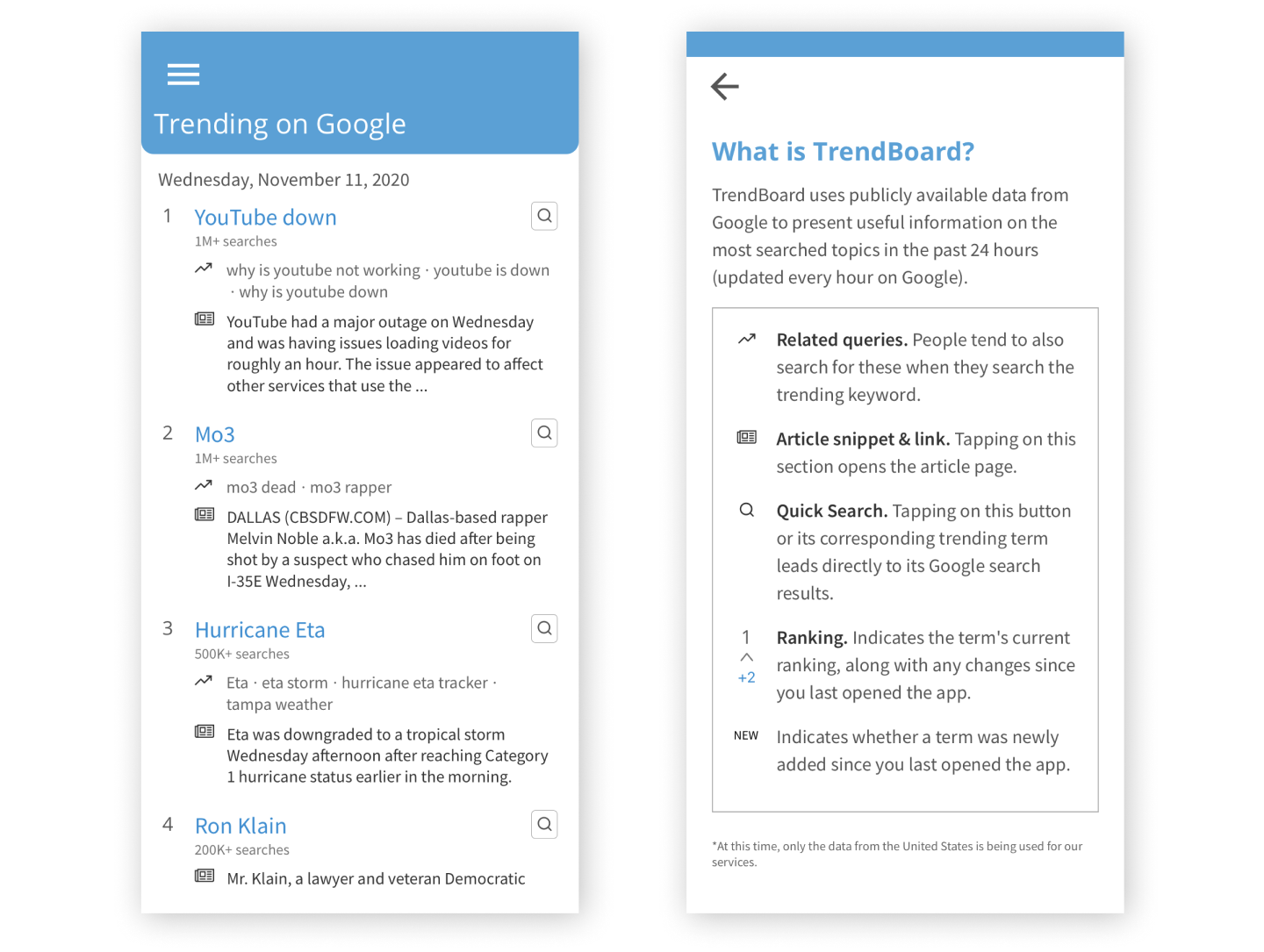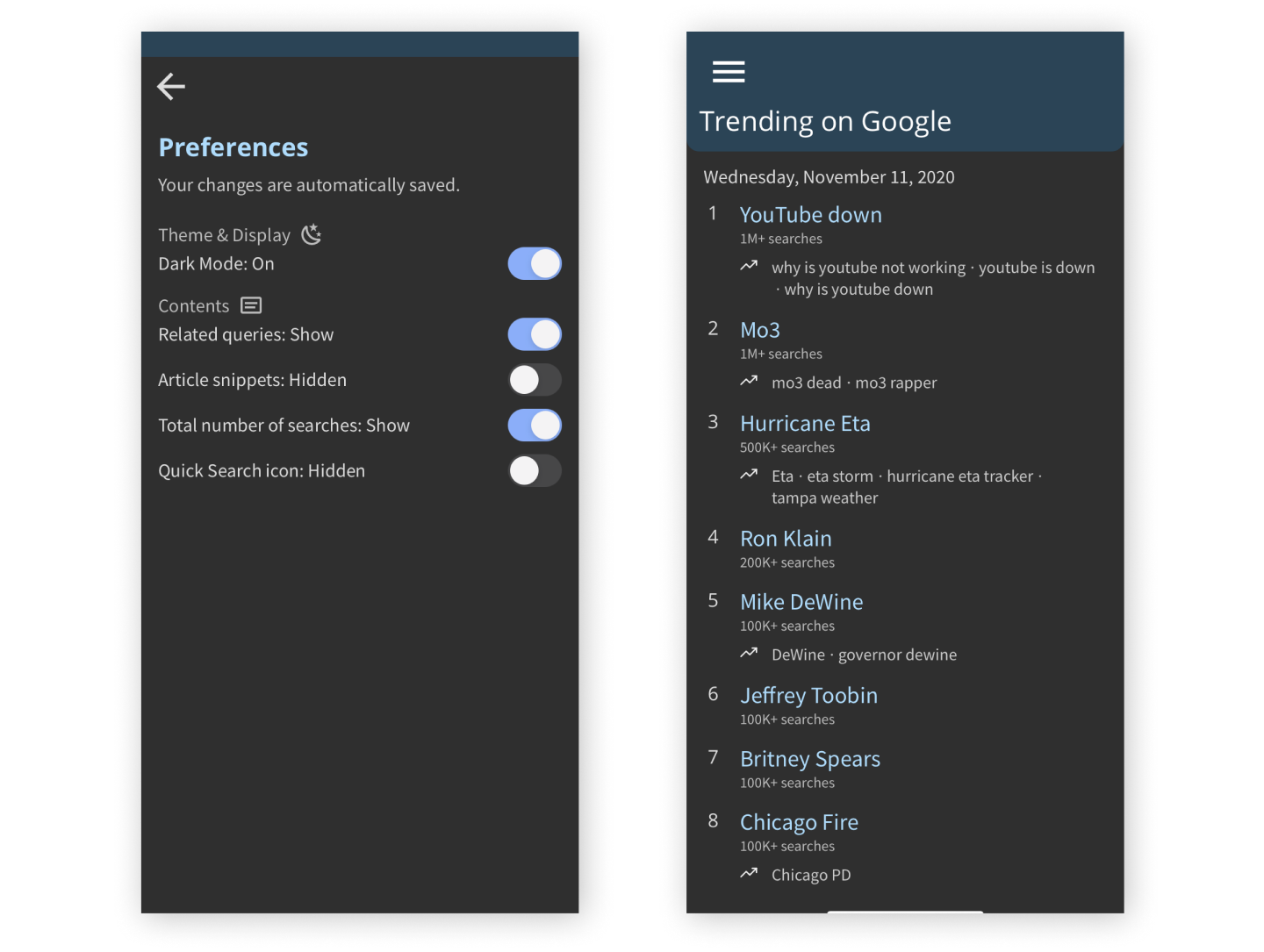Summary
With no prior experience in full-stack implementation of a mobile app, I delved into building TrendBoard as a learning opportunity.
Process
I shifted and balanced priorities along the development process, at first focusing on identifying pain points on the existing Google Trends service and researching analogous UX/UI across different apps, identifying the features to prioritize, and then moving onto obtaining and synthesizing new knowledge on the technical pieces of the app. This included setting up a flow of recent data from Google Trends to MongoDB through AWS Lambda, using the FastAPI microframework for the app to fetch the latest Trends data, configuring the API server through AWS, and learning to implement UI and asynchronous logic in React Native.
What I learned
Besides the technical experience of building a mobile app in React Native, and the confidence I gained from learning and adapting to a variety of unfamiliar knowledge, I learned the massive importance and complexity of actively maintaining and iterating on a mobile application.
I used analytics-driven user data to determine what to prioritize in each iteration, but very quickly, I ended up seeking a broader view of usage from a breadth of data that I hadn't taken into account during implementation (and therefore didn't have). Thankfully, my users were also my friends and I was able to interview them to learn their thoughts, but I learned the important lesson: it's always worth the time to consider the different parts of the development cycle at any part of the development.




